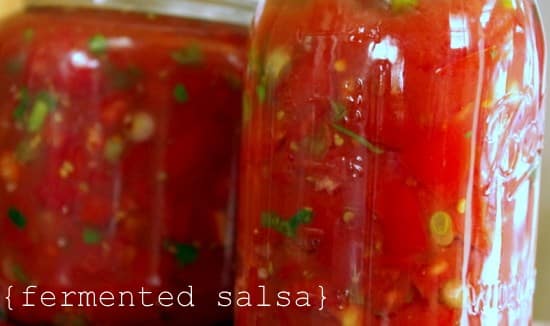Some Tips for Lacto-Fermenting Your Harvest

When I discovered lacto-fermentation seven years ago now, my mind was blown. What do you mean I can make delicious pickles without boiling everything good out of them and heating up my kitchen?! Not only that, but they can have more of the benefits of a raw, living food.
I felt like my whole life up to that point was a lie… at least the part where I canned pickles.
I’ve shared some thoughts here before about preserving food without canning, but I am so passionate and excited about utilizing lacto-fermentation as a means of food preservation, that I thought I’d share some of the tid-bits that have made this method work for our family over the years.
1. Make sure your vegetables are submerged.
I cannot emphasize this enough as the most important part of the fermentation process. Being below the level of the brine provides the environment necessary for anaerobic fermentation to take place. It helps to keep any mold atop your brine and not in your vegetables. I like to use ceramic fermentation weights, but I’ve also written about other options you can use to get the job done.
2. Create the right salinity for your brine.
I generally use a ratio of 1 quart water : 2-3 Tablespoons of salt for a brine. Salt slows down the fermentation process, and heat speeds it up. So, when I’m fermenting during hot summer days, I like to push more towards the 3 Tablespoons. Also, high-water vegetables like cucumbers often require more salt, and older recipes for traditionally fermented pickles often call for adding salt to the brine a few days after beginning the fermentation process. For that reason, I often add more salt to cucumbers and other watery vegetables.

3. Give it time and temperature.
Fermentation is both a science and an art, and for that reason there are simultaneously no guarantees and a few rules to live by. One of those rules is that fermentation takes time. There are several fermentative bacteria involved in the process of fully fermenting your vegetables. These bacteria all have specific needs and occur at specific times in the process. For that reason, you must give the process time to fully occur before moving to cold storage. Many recipes call for just three days of fermentation before moving to refrigeration. While the vegetables have begun to ferment at three days, they haven’t completed the process. And while storing in a cool place is a good idea, a refrigerator is actually too cold to allow for the rest of the bacteria to proliferate.
Temperature is huge in fermentation, with a rise in temperature relating directly to the speed at which the vegetables ferment. So, the hotter your days, the faster your fermentation. Hot temperatures can degrade the flavor and texture of your vegetables, so do your best to keep the temperature at 85 or below, and remember to adjust your salt as noted above.
So, those are my top three tips for preserving your harvest with fermentation. Now, onto some recipes and additional resources.
Here are a few of our family’s favorite recipes:
And here are a few of the books that I’ve gleaned from:
- The Complete Idiot’s Guide to Fermenting Foods
- Preserving Food Without Canning
- Cultured Food Life
- The Art of Fermentation
There are many more resources out there, and I am always finding new information on the topic, but this was a good starting point for me.
Are you lacto-fermenting your vegetables this summer?
